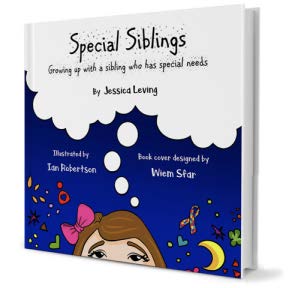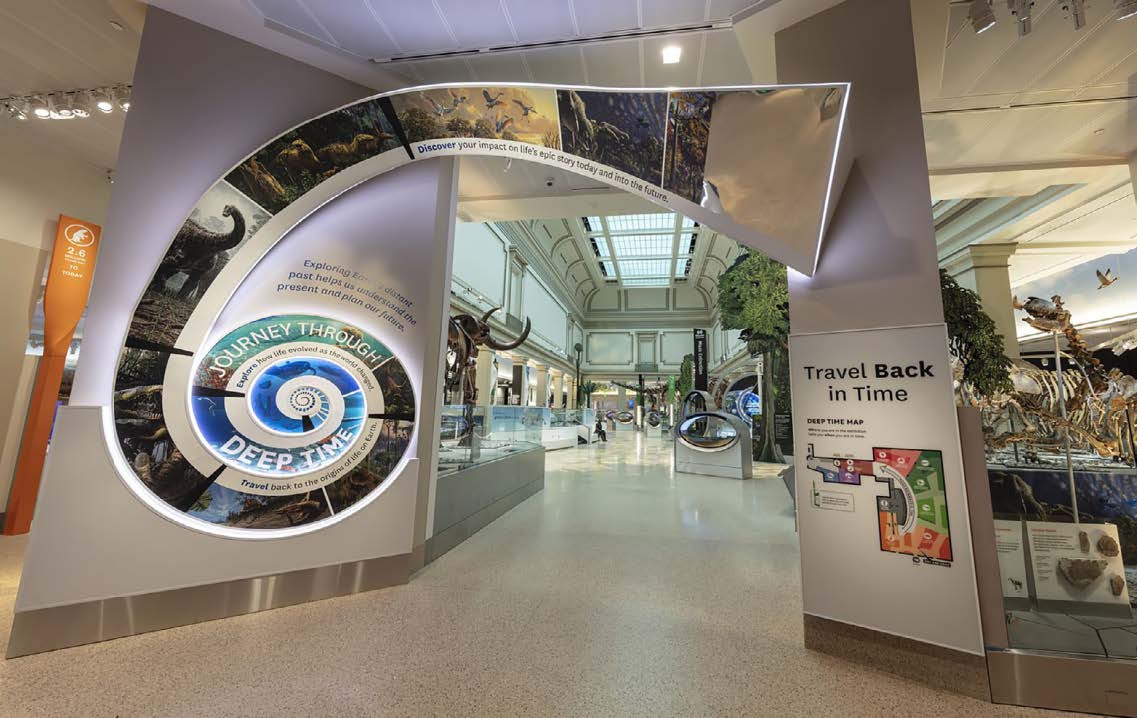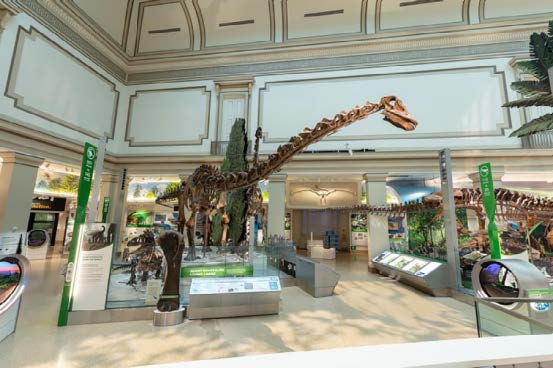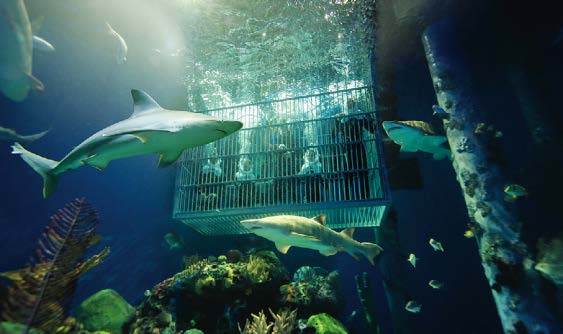A NEW PICTURE BOOK FOR SIBLINGS OF KIDS WITH DISABILITIES
Author Jessica Leving remembers clearly the night her brother, Billy, was diagnosed with autism. She was eight years old and recalls coming home from school to find her mom crying in her room with the door closed. It was days before anyone would tell her why.

- Title: Special Siblings: Growing up with a sibling who has special needs
- Author: Jessica Leving;
- Illustrator: Ian Robertson
- Publisher: Independently published
- Publication Date: August 16, 2019
- Paperback: 33 pages
- ISBN-13: 978-1686677328
- Available at amazon.com
"Everything was different after Billy's diagnosis," says Leving. "Our lives started revolving around his doctor appointments and therapy sessions. It was all very hard for me to understand at that age."
Now an adult, Leving has written and published a picture book geared toward helping other young siblings feel less alone and discover the joy in their special sibling relationships.
Though the book is geared toward children 3-8, siblings of all ages seem to finding that the message still resonates.
"The loving and honest portrayal of Jessica and Billy's life together will let other children know they are not alone," said reviewer Suzanne Aaron. "While there may be frustrations, there is also lots of love." For more information, e-mail specialsiblings@gmail.com •
SMITHSONIAN DINOSAURS ACCESSIBLE VIA AUDIO DESCRIPTION, TACTILE MODELS

GOING DEEP: Demonstrations at the Deep Time exhibit will feature touchable objects that will enlighten visitors on the topics of fossil dating, fossilization and evolution.
BY MEG RIVERS AND SAMANTHA BARRY
This October, the Smithsonian's National Museum of Natural History will launch a new mobile app with audio description for our new fossil hall: the David H. Koch Hall of Fossils – Deep Time.
The app is designed for visitors who are blind or have low vision to access key content in this new exhibition. This new offering, combined with tactile components and robust volunteer engagement throughout the hall, is a direct result of a collaborative, intentional effort to make the new hall something that all visitors will enjoy.
Working as part of a team of hundreds of scientists, educators, artists and designers who contributed to the Deep Time exhibition, one of our roles is to consider accessibility in the space. We want all dinosaur enthusiasts, and everyone who's curious about the natural world and science, to be able to experience the new 31,000 square-foot permanent exhibit, home to more than 700 fossils and the nation's T-Rex.
Early on in the exhibition development process, we looked across the board at what accessibility meant for our visitors and how we could improve our approach to access in this very unique and much awaited gallery. We knew Deep Time would be filled with dynamic specimens in really wonderful activated backdrops, so ensuring all our visitors are able to experience that sense of awe and engage with our content was a priority. With so many specimens behind glass, a key aspect of this initiative was identifying how we could ensure our visitors who are blind or have low vision could engage with everything the Museum has to offer.
MOBILE APP/AUDIO DESCRIPTIONS
As part of a suite of accessibility offerings, we're very excited to be able to offer audio descriptions via a downloadable mobile app. Users are able to use a menu to select the content they want to explore based on the main graphics and content in the gallery. Since this is downloadable, users can access the content before their visit or discover more after their visit.
To make the app as intuitive as possible, it was designed so users can use their phone's accessibility features, such as screen readers, to access the stories, specimens and images on iOS and Android. At the same time, users who do not use screen readers can view all text on screen. This kind of universal design offers a shared experience, while at the same time, all users are able to independently choose which exhibit components they'd like to explore.
While audio descriptions are commonly used in art museums, natural history museums are exploring how best to describe our spaces with content in mind. The way you describe an art piece or an object, for example, is different from how you describe a scientific specimen. Through intensive prototyping and user testing, we're learning and defining good audio description for our space, which will inform future projects here.
We also know that some visitors may choose not to use the mobile app. The app is one option; with advanced notice we can arrange audio described tours of the exhibit for visitors who are blind or have low vision. Led by specially trained volunteers, visitors can receive one-on-one descriptions of our exhibit specimens and tactile objects.

AN EARLY START: Families can sign up on a first-come, first-served basis to experience the Museum before it opens to the general public and explore with a limited number of visitors.
TACTILE MODELS
While wandering through the Jurassic and other time periods in Deep Time, visitors engage with a number of bronzes, 3-D printed or actual fossils. Touchable specimens add to the immersive, interactive experience of a museum visit for all visitors. We witnessed first-hand the impact of the tactile components this summer during user testing. One example involved a couple – where the wife has been blind since birth and her husband lost his sight at age 18. As he was touching the Triceratops, he was astonished by the sensation of remembering in that moment what a Triceratops looked like. This kind of feedback is invaluable and accentuates our hope is that all of our visitors can utilize the exhibits tactile models to have their own memorable and educational experiences.
ACCESSIBILITY BEYOND DEEP TIME
In addition to what we're providing for the new Deep Time exhibition, we offer quiet spaces, recognizing that there's a need, particularly for visitors who are on the autism spectrum or with other cognitive disabilities. Through a Smithsonian Institute initiative, we also offer sensory-friendly activities and early entry to the museum through the Morning at the Museum program. Families can sign up in advance (first-come, first-served) to experience the Museum before it opens to the general public. These times are quite popular because you're able to explore the museum with a limited number of visitors so it's a much quieter experience. We recommend that families who are interested sign up early for these spaces.
More than ever, museums are exploring the best way to provide access to everyone in a way that meets their needs. For the National Museum of Natural History, Deep Time is a great catalyst to constantly improve and to continue to incorporate accessibility early on in the exhibit design and development process. The accessibility of Deep Time will influence future projects here and will be shared with colleagues at other museums at the Smithsonian and beyond. By sharing with each other, we can build on each other's experiences to provide the best experience for our visitors.
Without a doubt, Autumn is one of the best times to visit the nation's capital. The summer crowds are gone, and the weather is cooler for long days of touring D.C. sites and museums.
ABOUT THE AUTHORS:
Meg Rivers is an exhibit developer and project manager, Smithsonian Institution, National Museum of Natural History. Samantha Barry is the visitor experience and accessibility manager, Smithsonian Institution, National Museum of Natural History.
SENSORY-FRIENDLY EXPERIENCES AT WONDERS OF WILDLIFE
Johnny Morris' Wonders of Wildlife National Museum and Aquarium consists of an all-new 1.5-million-gallon Aquarium Adventure showcasing 35,000 live fish, mammals, reptiles, amphibians, and birds, and immersive Wildlife Galleries that bring visitors eye-to-eye with the greatest collection of record-setting game animals ever assembled.
Created by conservationist and Bass Pro Shops founder/CEO Johnny Morris, the 350,000-square-foot experience celebrates those who hunt, fish, and act as stewards of the land and water. Located next to Bass Pro Shops National Headquarters in Springfield, Missouri, the campus is a centerpiece of America's Conservation Capital in Missouri's Ozark Mountains.

IMMERSIVE EXPERIENCE: The Out to Sea Shark Dive lets guests come face-to-face with sand tiger sharks, brown sharks, barracuda and Atlantic goliath groupers.
Since opening in 2017, Wonders of Wildlife has been delivering unforgettable experiences for all families. The attraction has intentionally made every effort to accommodate all type of visitors and has recently made enhanced accommodations to serve individuals with autism and other sensory needs. In April 2019, the International Board of Credentialing and Continuing Education Standards (IBCCES) designated WOW a Certified Autism Center (CAC). As a part of the new designation, the staff at Wonders of Wildlife is committed to providing a positive experience for all visitors by learning to recognize, welcome and accommodate guests with autism spectrum disorder and other sensory needs. Additionally, adaptations have been made to exhibits and activities around Wonders of Wildlife to ensure that every guest can experience the immersive aquarium and museum.
OUT TO SEA SHARK DIVE
Out to Sea Shark Dive is Wonders of Wildlife's most immersive experience – and the only place to dive with sharks in the Midwest. State-of-the-art air helmets allow guests to comfortably submerge under the water without diver certification and experience sand tiger sharks, brown sharks, barracuda, Atlantic goliath groupers and dozens of other colorful reef fish face-to-face.
AMAZON RAINFOREST
This exhibit is wilder than ever before with the recent addition of several new animals including a two-toed sloth and marmoset monkeys. The charismatic two-toed sloth has quickly become a guest favorite. One of the world's slowest mammals, two-toed sloths spend nearly all their time hanging from tree branches thanks to the powerful grip of their long claws. Wonders of Wildlife is also adding primates to its lineup of animals. The 4D gallery promotes up-close encounters to some of the Amazon's most amazing species, inspiring guests to get involved in the conservation of the planet's most precious natural resources.
While Wonders of Wildlife offers plenty of activities for visitors of the heartland, it also provides conservation learning opportunities for children across Missouri. Visit: wondersofwildlife.org •